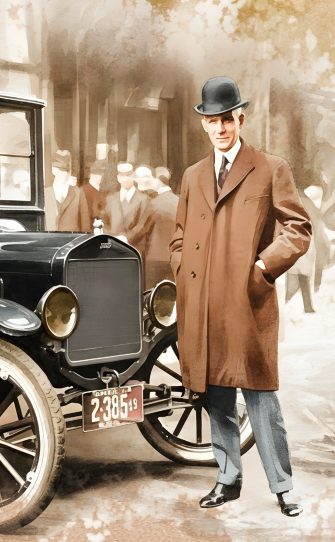In 1927, Henry Ford, the American industrialist known for revolutionizing the automotive industry, decided to create a project unique in history: Fordlândia.
His goal was to secure control over the production of natural rubber, a key raw material for the tires of his automobiles, at a time when global demand for this product was rapidly increasing. Most of the rubber came from the Amazon region, where it was harvested by local rubber tappers in a system that was difficult to control. Ford acquired a vast area near the Tapajós River in Pará, Brazil, and embarked on the ambitious task of building a model city, combining industry, agriculture, and colonization, to produce rubber directly and efficiently.
Fordlândia was conceived as an American industrial enclave in the middle of the rainforest, where Western organization and technology would meet the challenges of the Amazon’s lush nature.
Construction of Fordlândia began in 1928, and infrastructure quickly rose, including wide, well-planned streets, a hospital, schools, and various services. The plan was to create a self-sufficient community that would function as a small industrial city, where workers could live, work, and enjoy a “civilized” life according to the American model. However, the reality of the Amazon region presented unexpected challenges: poor soil for intensive rubber tree cultivation, a hot and humid climate, and pests that attacked the plantations. These factors, combined with logistical problems due to the remote location, made the project difficult to sustain, requiring enormous effort to remain operational.
The foundation of Fordlândia was the rubber tree plantation, where rubber was manually extracted by local rubber tappers. These workers faced harsh conditions in a tropical, isolated environment, dedicating themselves daily to latex extraction, which would later be processed for industrial use.
Life in the community was marked by hard work and a routine connected to the forest, with constant challenges caused by the climate, distance, and the demanding nature of the task. Despite these difficulties, the rubber tappers were essential to maintaining production during the years Fordlândia existed. Henry Ford attempted to impose an American lifestyle on this community, building standardized houses and promoting cultural and recreational activities, such as parties and dancing, to organize social life.
However, cultural differences and the harsh environmental conditions led many workers to resist these changes. This social tension was one of many difficulties that marked daily life in Fordlândia and contributed to the project’s failure. Despite Henry Ford’s significant investment and ambitious vision, the Fordlândia project was abandoned in 1945, after nearly two decades of trials and hardships.
The pests that devastated the plantations, the adverse conditions of the rainforest, workers’ resistance to rigid rules, and rising costs made the enterprise unsustainable. Nonetheless, Fordlândia left a fascinating historical legacy: it is a symbol of human audacity, an attempt to industrialize the Amazon, and the clash between vastly different cultures and environments.
Today, the ruins of Fordlândia attract historians, tourists, and curious visitors eager to learn about this unique experience that left its mark on the Pará region.
